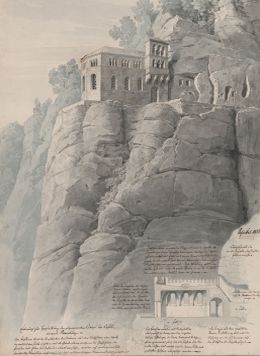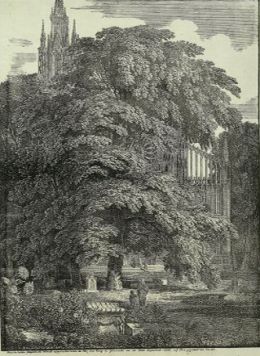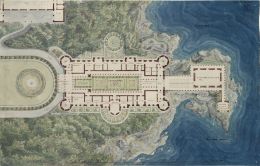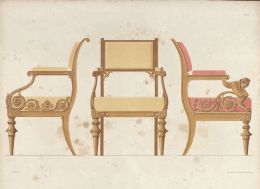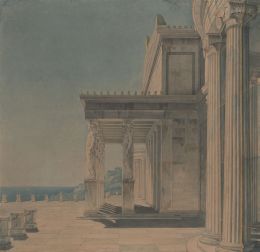
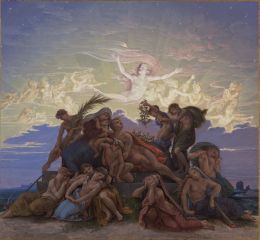
The Research Project
The Schinkel online catalogue is the result of a research project, Das Erbe Schinkels und die Geschichtsbilder im Frühen Historismus. Vom Depot in den Diskurs - 3 Transformationen. Ein Forschungsvorhaben des Berliner Kupferstichkabinetts (2009-2012). Supported by the Federal Ministry for Education and Research, it comprised all essential functions of advanced museum research in step-by-step "translations":
The research focused on a complex and extremely representative collection of more than 6,000 works, water colours, gouache paintings, drawings and prints, mostly by the artist's own hand - the legacy of Karl Friedrich Schinkel (1781-1841), which is kept at the Berlin Kupferstichkabinett, Museum of Prints and Drawings.
A first aim was the rehousing of the entire Schinkel collection. Hereby, the special focus was placed on researching the effect of volatile organic compounds (VOCs) that were being emitted from the objects themselves, the historic housing materials and the storage furniture. The research results lead to the development of an innovative housing system, that meets the museum´s requirements: It had to be effective regarding storage, catering for the limited available space, cost effective and manageable regarding the handling of the objects. A further aim was the detailed art technological indexing of Schinkel´s drawings and prints, in which the carrier materials, in particular the huge variety of papers and their watermarks, as well as the drawing and painting instruments and -materials were identified.
The second project aim was to improve the longterm-accessibility and indexing of the collection. The usage of a variety of innovative technologies, digitalization and cataloguing, would eventually lead to the publication of the online catalogue. This medium, aimed at specialist scholars and laypersons alike, has now been published on this website and is subject to regular updates. Images and core data of the Schinkel-works, albeit in a reduced formate, are also available on the collections' website of the Berlin Museums and on the online portal of the Deutsche Digitale Bibliothek as well as associated networks.
The art historical examination and art-technological analysis of Schinkel's multi-facetted and diverse oeuvre formed the third pillar of the research project. This module focused primarily on the question regarding Schinkel's historical notions. In expert conferences, publications and presentations, renowned academics investigated the significance of early historism in Europe, cocerning the fundamentally important transformations of history reflected in Schinkels buildings, paintings, object of applied arts and decorations from the first half of the 19th century. Therefore this historical reference should be regarded as the starting point for the contemporary debate regarding reconstruction and deconstruction.
The project's crowning glory encompasses the genuinely core function of a museum: display, explanation and intermediation. The large exhibition Karl Friedrich Schinkel. Geschichte und Poesie (Berlin, Kupferstichkabinett im Kulturforum , 7. 9. 2012 - 6. 1. 2013; Munich, Kunsthalle der Hypo-Kulturstiftung, 1.2. - 12.5.2013) demonstratively translates the research results and the process of modern science.
Besides the online catalogue, two publications are the direct result of the research project: Karl Friedrich Schinkel. Geschichte und Poesie, hg. von Hein-Th. Schulze Altcappenberg, Rolf H. Johannsen and Christiane Lange, Kupferstichkabinett - Staatliche Museen zu Berlin, Kunsthalle der Hypo-Kulturstiftung and Hirmer Verlag, Berlin and Munich 2012; Karl Friedrich Schinkel. Geschichte und Poesie. Das Studienbuch, hg. von Hein-Th. Schulze Altcappenberg and Rolf Johannsen with the support of Anna Marie Pfäfflin, Kupferstichkabinett - Staatliche Museen zu Berlin and Deutscher Kunstverlag, Berlin and Munich 2012.
All people involved in the project, authors, members of staff as well as the curators' circle, partners and project coordinators are mentioned in the imprint. We would praticularly like to express our gratitute to the Federal Ministry of Education and Research, who have generously funded this research project.


